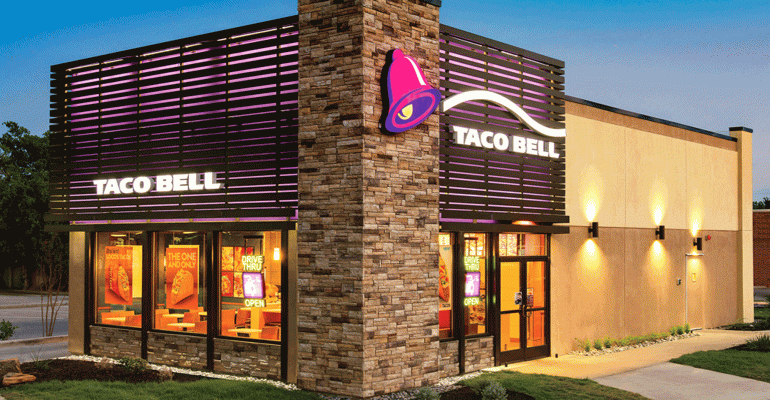 This post is part of the On the Margin blog.
This post is part of the On the Margin blog.
The performance of two restaurant chains in the first three months of this year perfectly describes the restaurant industry in 2017 in a nutshell.
On Tuesday, DineEquity Inc. said Applebee’s same-store sales fell 7.9 percent.
On Wednesday, Yum! Brands Inc. said Taco Bell’s same-store sales increased 8 percent.
They are two different brands in two different segments. But the widely different performances demonstrate that consumers will flock to restaurants that give them what they want in the format they want it in.
Taco Bell has an advantage in that it operates in a limited-service sector at a time when consumers are dining in less and taking out more. And, as we said earlier this week, Applebee’s operates in arguably the weakest sub-segment there is in the industry at the moment, mass-casual, bar-and-grill chains.
At the same time, however, Taco Bell is outperforming its segment, while Applebee’s is underperforming its segment. Taco Bell is doing things right to lure customers, while Applebee’s has had some misses.
Few companies are as connected with its consumer as Taco Bell. The company made a taco shell out of fried chicken, called it a “Naked Chicken Chalupa,” and its customers couldn’t get enough of the product. The chain sold 25 million of them. Traffic increased 5 percent in the quarter.
As Yum CEO Greg Creed put it, Taco Bell’s marketing team has made the chain a “cult brand.” That’s incredible, considering that Taco Bell is the country’s sixth largest restaurant chain.
Applebee’s, meanwhile, misjudged its consumers last year when it added wood-fired grills and hand-cut steaks. The promotion was “off target with value-focused trends in the industry,” DineEquity interim CEO Richard Dahl said in February.
Consumers are placing limits on the number of times they dine out, either because they’re spending too much on housing, they’re watching too much Netflix or simply because groceries are cheap.
And yet their options keep growing, as investors pump money into new chains and other brands push for more unit growth, while alternative industries like grocers and convenience stores make inroads into the prepared foods business.
All of that translates into an environment in which consumers can be picky. Brands that successfully discover the right formula for generating more consumers are winning. And they’re going away from those that miss the mark.
Jonathan Maze, Nation’s Restaurant News senior financial editor, does not directly own stock or interest in a restaurant company.
Contact Jonathan Maze at [email protected]
Follow him on Twitter: @jonathanmaze





